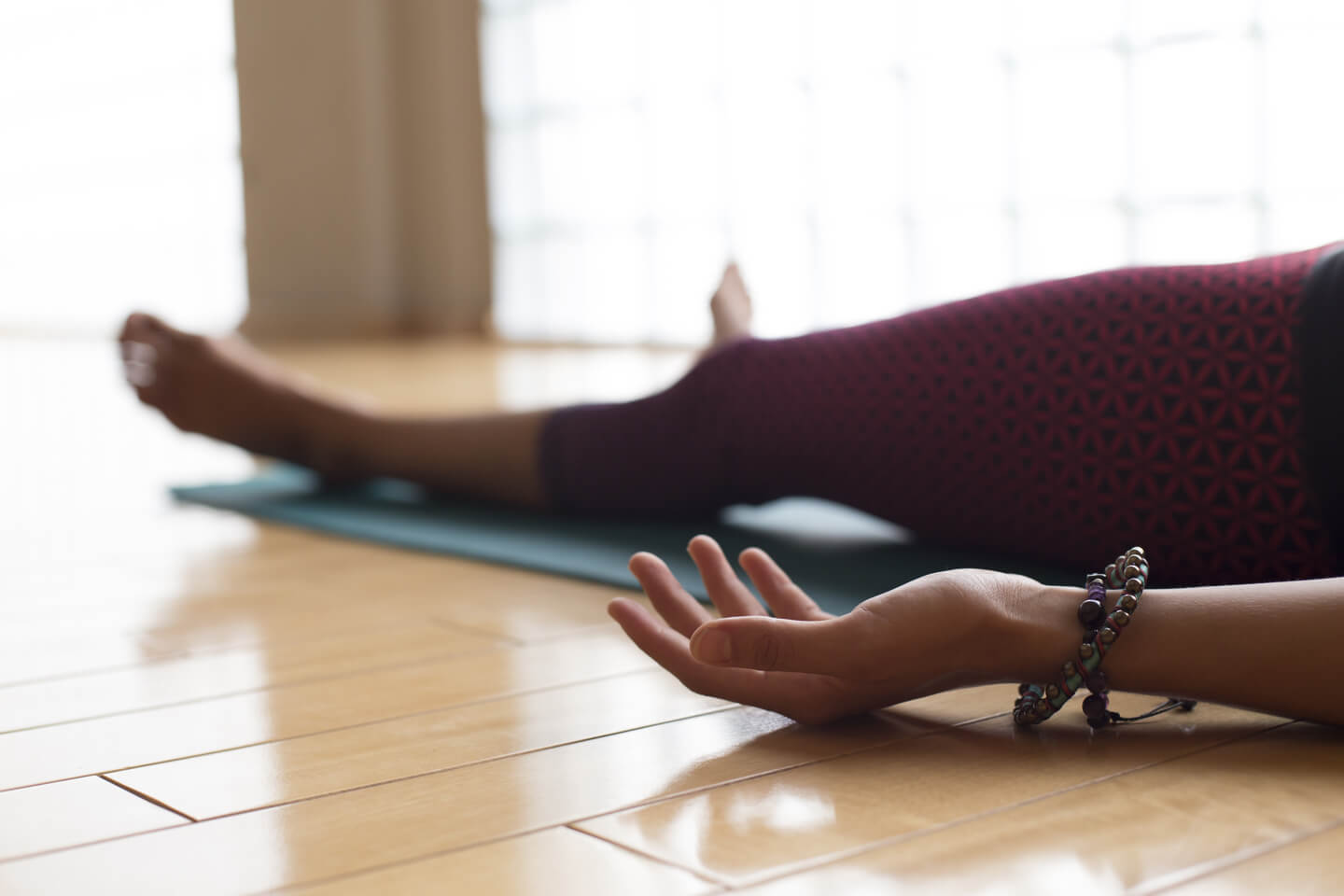Savasana (pronounced shih – vah- sah – nah) is the final posture in each yoga class where all students are guided to lie down on their backs with their hands by their sides – hands and feet about as wide as the mat. Savasana translates to mean ‘corpse pose’ not only because it emulates a corpse on the floor. In the karmic tradition where death is seen as an important part of life, savasana is part of the acceptance of the reality of the moment and the reality of our lives by accepting our eventual demise.
That may sound grim to some, but ultimately savasana is a relaxation posture where the body is given the chance to internalise all the movement of the class up to this point. It is a practice of stillness, acceptance and surrender. By surrendering the body into the mat, we allow the central nervous system to calm down and give the mind a rare and precious opportunity to be still.
When we allow the body to be still after a physical yoga practice, we allow muscles to release tension and the heart rate to decrease. This helps the mind to integrate the physical changes that have been made in the class up to that point. By allowing the body to completely relax we alter our mood, boost our memory and leave the class feeling more at ease.
Savasana is an opportunity to practice meditation at a point when the muscles want to relax and let go. This helps our mind to do the same. By surrendering the body after a period of dynamic movement, we can more easily allow the mind to mirror this relaxation and become still in the midst of its usual fast-thinking world.
Beginning to notice the body and the mind within the stillness of savasana allows us a chance to connect to our real selves more fully – underneath the fast paced tasks, movements, thoughts and lifestyle we live in, we find stillness, surrender and peace. The more we practice this, the more we practice coming home to our own body and mind.
This can be a very challenging posture for many beginners, as the culture we live in tends to celebrate physical strength, exertion, busy-ness and speed over mental stillness, focus and peace. This can make this posture challenging as we are not used to becoming still. The mind will tend towards distractions, judgements and resistance. This is totally normal and part of leaning in to a yoga practice – if it was easy you wouldn’t need to practice!
If you’re an experienced yogi or you happen to love savasana, feel free to share some tips for learning to let go – we could all use a little more stillness in our lives so every nugget of wisdom is welcome!



